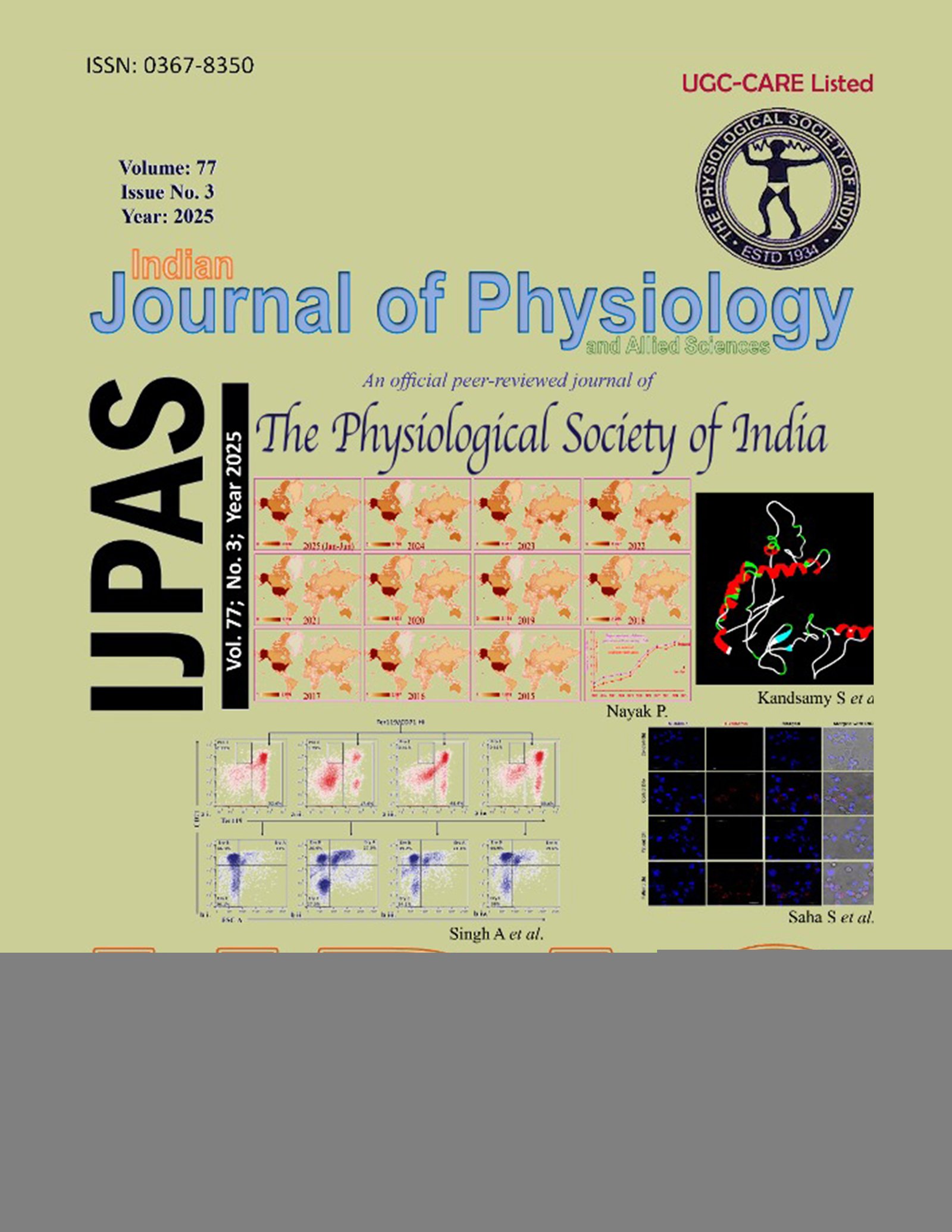Tumor necrosis factor alpha upregulates exosomal matrix metalloproteinase-9 secretion and aggravates metastatic phenotype in SKOV-3 cell line and patients with ovarian cancer
DOI:
https://doi.org/10.55184/ijpas.v77i03.536Keywords:
Ovarian cancer, exosomal content, MMP-9, TNF-α treatment, EMT markersAbstract
Background: Ovarian cancer is one of the most aggressive gynecologic malignancies, marked by high metastatic potential and poor prognosis. Exosomes, small extracellular vesicles secreted by tumor cells, have emerged as critical mediators of cancer progression by facilitating intercellular communication within the tumor microenvironment. It is hypothesized that TNFα promotes the release of MMP-9-rich exosomes, contributing to ovarian cancer progression via EMT and immune modulation. Methods: We used the TNF-α-resistant, p53-mutated SKOV-3 ovarian cancer cell line to examine the effects of TNF-α stimulation on exosome secretion, MMP-9 content, and EMT-related changes. Exosome isolation was performed from cell culture supernatants and patient serum samples. MMP-9 content and activity were analyzed via zymography and immunoblotting. EMT markers and cytoskeletal morphology were assessed by immunofluorescence staining. Functional validation of patient-derived exosomes was carried out using THP-1 monocyte co-culture assays. Results: TNFα treatment significantly increased the secretion of exosomes from SKOV-3 cells and elevated the MMP-9 content in the conditioned media. Treated cells exhibited reduced E-cadherin expression and acquired a mesenchymal-like morphology, confirmed by phalloidin staining of the actin cytoskeleton. Exosomes isolated from ovarian cancer patient serum also showed elevated MMP-9 activity, supporting the in-vivo relevance of our in-vitro findings. Additionally, patient-derived exosomes were biologically active and capable of modulating immune responses in THP-1 monocytes. Conclusion: TNF-α may drive ovarian cancer progression by enhancing MMP-9-enriched exosome secretion, promoting EMT and immune modulation. Targeting this pathway could offer new therapeutic strategies.
Downloads
Published
How to Cite
Issue
Section
License
Copyright (c) 2025 Susmita Saha, Sraddhya Roy, Nabanita Chatterjee, Snehasikta Swarnakar

This work is licensed under a Creative Commons Attribution-NonCommercial-NoDerivatives 4.0 International License.

